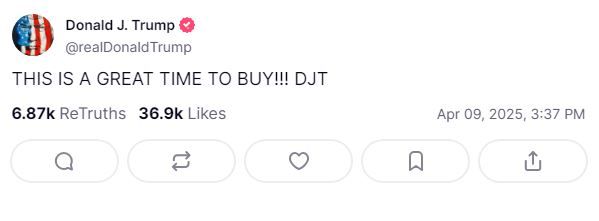8 May 2025. A date that might pass unnoticed—unless you watch markets closely or remember 2010.
Back then, the EU and IMF announced a €750 billion rescue package to hold the eurozone together. Greece was on the edge, the euro was shaky, and confidence was fading. But with one move, one number, billions in capital shifted back into the system.
It wasn’t a quarterly result; rather, it wasn’t driven by market logic. Instead, it was a story — a message, a signal that someone was in control.
Fifteen years later, the pattern feels familiar. Just weeks ago, US President Donald J. Trump suspended most global tariffs for 90 days and raised duties on Chinese goods to 125%, adding the existing 20% rate, resulting in a cumulative tariff rate of 145%. The bigger headline, though? Not in policy, but in tone.
His post: “This is a great time to buy.”
📲 Just like that, over $4 trillion in market value appeared—almost instantly.
No earnings. No growth. Just confidence, triggered by one man, one sentence, and one perfectly timed push.
It raises a bigger question: Have we entered an era where narratives move faster than fundamentals?
The answer seems clear. 📈 In today’s market, perception drives momentum. Language fuels liquidity. And billions don’t wait for spreadsheets—they follow stories.
This isn’t about good or bad. It’s not even about Trump. It’s about timing, trust, and the tools we now accept as normal.
If a post can create trillions in value, how do we interpret markets in the future?
Maybe it’s time to track not only data—but the storytellers, too.
Source: LinkedIn




